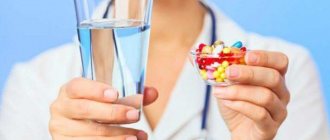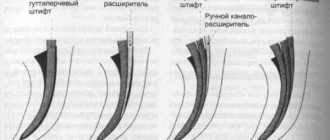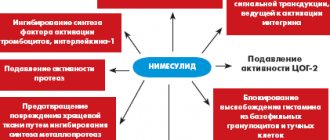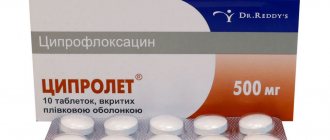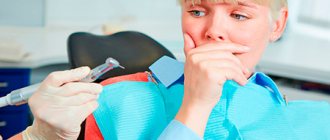Ultracaine D-S forte. Carpules 1.7 ml
Active substance:
– articaine hydrochloride 40 mg/ml. Note, 40 milligrams in one milliliter! This means that in one carpool there are 68 mg. This is actually very important. Why - see below.
– epinephrine hydrochloride 12 mcg/ml. Again, note that we are talking about micrograms (millionths of a gram) per milliliter. It turns out that the carpul contains 20.4 mcg of epinephrine hydrochloride. Well. or 17 mcg, in terms of pure adrenaline.
Inactive substance:
– sodium disulfite (sodium metabisulfite) – 0.5 mg/ml (0.85 mg/carpule)
– sodium chloride (saline solution) – 1 mg/ml (1.7 mg/carpule)
– water – everything else.
Other information:
According to a number of studies (A. I. Marakhova, M. A. Zhuravleva et al., 2015), the drug Ultracaine D-S forte, according to high-precision chromatography, contains about 0.047% of impurities, which the authors attribute to articaine derivatives.
The pH of the Ultracain D-S forte solution is 3.960. Moreover, pH fluctuations are allowed within the range of 3.0-5.0
Origin:
Sanofi-Aventis Deutchland GmbH, Germany.
Preparations for infiltration anesthesia
Anesthesia in dentistry is most often carried out using injection solutions. The most common ones for this are “Lidocaine” or “Novocaine” in ampoules. It is these medications that provide pain relief in all budget clinics. For this, special syringes with a thin needle are used. But recently, new technologies have been increasingly used. For example, private medical centers have switched to carpule anesthesia. Its peculiarity is the use of disposable cartridges with medicine. In addition, the needle for such injections is taken very sharp, which ensures the absence of pain during the injection.
In addition to Novocaine and Lidocaine, articaine and mepivacaine have recently been used in dentistry. There are several drugs based on these substances:
- "Ultracaine";
- "Scandonest";
- "Ubistezin";
- "Septanest".
The drug "Novocain" in dentistry
This anesthetic was synthesized at the beginning of the 20th century. And for many years, Novocain in ampoules became the most common means of pain relief during any surgical interventions. This is an inexpensive drug, so it is accessible to everyone; a package costs 30-40 rubles. But recently it has been used less and less due to the high risk of side effects.
The instructions for Novocain warn that after its administration, a drop in blood pressure, dizziness, weakness or allergic reactions may occur. In addition, sometimes it is not very effective, so it is administered together with other drugs. Most often, Novocaine is combined with adrenaline, but this mixture is contraindicated for high blood pressure. The low effectiveness of this drug, as well as the loss of its functions in the presence of purulent inflammation, has led to the fact that it is now used very rarely in dentistry.
Use of the drug "Lidocaine"
This is the most common anesthetic, widely used not only in budget dental clinics, but also in private ones. It is quite effective, completely removing sensitivity for about 1-2 hours. However, it rarely causes side effects. But sometimes intolerance to Lidocaine still occurs. In this case, allergic reactions, a drop in blood pressure, dizziness, weakness, and heart rhythm disturbances occur. Numbness of the lips and tongue often occurs, which can lead to accidental injury.
In order for this drug to work well and not cause negative reactions, it must be administered in the correct dosage. Sometimes it is sold not in ampoules, but in powder, so you need to know how to properly dilute Lidocaine for injection in dentistry. Most often, a 0.5% solution is used, but for conduction anesthesia in difficult cases, 1-2% can be used. The dosage is determined individually according to the severity of the patient's condition.
The drug "Ultracain"
This product is based on the strong anesthetic articaine. Additionally, the drug contains epinephrine. This is an analogue of adrenaline that has a vasoconstrictor effect. It is needed to lengthen the duration of action of the drug. "Ultracaine" is considered a safer and more effective remedy than the previously common "Lidocaine" or "Novocaine".
The instructions note that it has almost no contraindications. It is even used for children and elderly patients. The advantage of the drug is that it begins to act within 10 minutes, and its analgesic effect lasts up to 3.5 hours. The drug is sold in pharmacies at a price of 500 rubles per pack of 10 ampoules.
The most common side effects after Ultracaine are headaches, nausea and muscle twitching, but this is rare. Even less common is a drop in blood pressure or arrhythmia after administration of the drug. Ultracaine is available in several forms, differing in the dosage of the active substance and epinephrine. The most popular is “Ultracain D”, which does not contain additional components, therefore it is less likely to cause side effects.
The drug "Ubistezin"
The price of this painkiller is slightly higher than that of other similar drugs. But, it is widespread in dentistry due to its high efficiency. In addition to articaine, the drug "Ubistezin" includes adrenaline. It provides vasoconstriction at the injection site. Thanks to this, the drug is absorbed slowly and causes fewer side effects. Because of this, its effect lasts longer. Moreover, the effect occurs within 3-5 minutes after the injection, which in some cases is very important. In addition to the general side effects caused by articaine, after an injection carried out in violation of the rules, tissue ischemia or neurological problems may develop.
The price of “Ubistezin” is quite high, since it is mainly sold in large packages. 50 cartridges cost from 1,500 to 2,000 rubles, so they are purchased from dental clinics. This drug is allowed to be used even in pediatric dentistry. Its advantage is the rapid onset of analgesic effect and good tolerability. But, it is contraindicated to use the drug in case of arrhythmia, tachycardia, or the presence of allergic reactions.
Pain relief with Septanest
The drug is produced by a well-known French pharmaceutical company. It has been used in dentistry for a long time, and has already proven its effectiveness. Therefore, in difficult cases or in the absence of contraindications, dentists often choose Septanest. The instructions for use of the drug note that allergic reactions to this drug occur quite often. This can be explained by the presence of a large number of artificial additives. In addition, side effects such as respiratory and cardiac dysfunction often develop.
However, the drug is quite popular. The instructions for use for Septanest allow the drug to be used by children over 4 years of age and pregnant women. Contraindications include only glaucoma, bronchial asthma and heart rhythm disturbances. If necessary, you can use similar anesthetics that also contain articaine: Alfacaine, Brilocaine, Cytokartin, Primacaine.
The drug "Scandonest"
It is an anesthetic based on mepivacaine. It does not contain adrenaline, preservatives or other harmful components. It is used for intolerance to articaine or adrenaline. This drug can be used in the elderly, patients with diabetes, hypertension, bronchial asthma and even pregnant women. In addition to the analgesic effect, mepivacaine has the ability to constrict blood vessels, so additional adrenaline is not required. An analogue of the drug "Scandonest" is the anesthetic "Mepivastezin".
Ubistezin forte
Active substance:
– articaine hydrochloride 40 mg/ml , which corresponds to 68 mg in one carpule.
– epinephrine hydrochloride 12 mcg/ml , which corresponds to 17 mcg of adrenaline in the capsule.
Inactive substance:
– sodium sulfite – 0.6 mg/ml (1.02 mg in carpool)
– sodium chloride – 1.125 mg/ml (1.913 mg in carpool)
– water – everything else.
Other information:
Stabilization of Ubistezin by pH is carried out with a buffer solution of hydrochloric acid and sodium hydroxide, which are obviously present in the form of impurities, but for some reason are not indicated in the analytical passport.
The pH of the Ubistezin forte solution is 3.90. The pH of the solution may vary from 3.6 to 4.4.
Origin:
3M Deutchland GmbH, Germany
===========================
In general, what can I say about these two drugs... the difference between them, as you can see, is very small. So insignificant that you have to be a completely anesthetic sommelier or a drug addicted chemist to notice it. Someone here argued that the whole difference is in the pH value, but it is also very, very insignificant.
So why do doctors, and very well-known and authoritative ones, claim that Ubistezin works worse than Ultracaine? And why is there a legend among dentists that Ultracain is more effective and safe than Ubistezin?
We decided to look into this.
Anesthesia experts.
A quick survey of doctors (113 people in total) showed that the number of fans of one or another anesthetic is approximately equal. Almost 98.9% of doctors explain their fanaticism by habit, but there are no clear answers to the question “why did you choose this particular anesthetic?” We have not received. In addition, to the question “what is the difference between Ubistezin and Ultracaine D-S forte?” we received the following responses:
In my opinion, any fanaticism is bad and can affect the results of the study, so we invited independent experts who have never performed anesthesia in their lives. This means that their opinion is absolutely unbiased and can be trusted.
These are members and employees of Tseleevo Golf and Polo Club. With HCP penis length not exceeding 28.0 cm.
Why is pain relief performed in dentistry?
Before tooth extraction, anesthesia is required, as this operation is very painful. These sensations can trigger a heart attack or put the patient into shock. Therefore, such manipulations are now carried out under anesthesia. Most often, local anesthesia is used. The injected drug blocks the transmission of nerve impulses from the diseased tooth to the brain. The sensitivity of the gums and surrounding tissues is greatly reduced. Therefore, the tooth is removed painlessly.
Many patients do not visit the dentist on time precisely because they are afraid of pain. They drown out unpleasant sensations with pills, which often leads to serious complications. But, the use of painkillers during tooth extraction allows treatment to be carried out without discomfort for the patient.
Research method.
In general, we asked our experts to make a drive (long shot) with two carpules - Ubistezin and Ultracain. Tests were carried out with a Titleist Practice ball and different drivers at a side wind speed of 0.5-1 m/s. A total of 10 injections of drive anesthetic were made from each type of carpule.
Reviews about pain relief in dentistry
Nowadays dental treatment has become much more comfortable than before. Pain is usually not felt even when removed. At the same time, many patients note that they received effective pain relief with the help of regular Lidocaine. But there are also those who cannot tolerate this drug. And those who have been injected with modern anesthetics note that they have a better analgesic effect. There are many positive reviews about the drug "Ultracain", patients note that they do not feel anything even during a complex operation.
Category: Tooth extraction Published by Mister stomatolog
Research results and discussion.
Based on the results of the study, experts made the following conclusions:
- Doctor Vasiliev, are you completely stoned there, or what? – in general, a correct judgment. Non-negotiable.
– what kind of granny is this anyway? – rather a question rather than a result.
– getting drive from an anesthetic carpule is strange, to say the least. Respected experts told me the same thing.
– the length of the drive does not depend in any way on the brand of anesthetic. The effectiveness of anesthesia, obviously, too.

